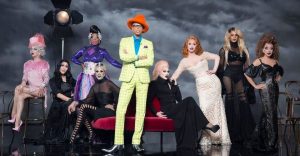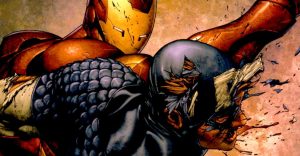Witcher 3’s Most Terrifying Monsters & Their Folkloric Inspirations

The Witcher 3: Wild Hunt, like Andrzej Sapkowski’s books which it was based on, draws much of its worldbuilding and lore from various eastern European folkloric traditions, gently twisting and altering it to fit The Witcher universe. Most ( if not all) of the monsters found in the game are based in some fashion on real-world mythological stories and monsters. Some draw only on the names while others are an exact facsimile.
Some of the most terrifying creatures in The Witcher 3 come from folklore that people used to explain away the strange and unusual, often making them feared and malicious bits of mythology. The scariest monsters in The Witcher 3 are not just the most powerful enemies, but also the most physically imposing, the ones with the darkest and most disturbing backstories – and they’re often the most mysterious ones in the game.
Some of the mythological inspirations that The Witcher 3 draws on for its monsters are looser than others. A few of them are inspired by name only, and some in appearance only, sharing a few visual queues with real-life folkloric monsters. There is a handful of monsters that are direct inspirations, bearing the same name, the same appearance, and the same supernatural origins and powers. The mythos that the creators are pulled from varies widely from every corner of the world, including Australian Aboriginal tribes, Russia, Poland, various parts of Eastern Europe, and some from the United Kingdom and Scotland.
Witcher 3 Monsters – Banshees Have A Mournful Howl

No matter what period and what form of media, a banshee (or beann’shie) can be recognized by its mournful and caterwauling howl that indicates certain doom. In The Witcher 3, this specter is typically female and appears on Saovine to wail and portend the deaths of those soon to come in the Toussaint area. Due to its ghostly nature, the Witcher’s offensive signs won’t do much to aid in combat. This depiction is fairly accurate to its mythological inspiration since a banshee is a mournful female spirit that screams to warn of oncoming death in Celtic myths. Unlike in The Witcher, banshees historically are not always malicious and were even considered household spirits by some Highland families. There were even those who believed that the banshee only keened for families of pure Irish descent.
Witcher 3 Monsters – Barghests Stalk The English Moors

If players are unlucky enough to be caught out at night around the outskirts of Vizima, they may have the unfortunate stroke of running into a pack of Barghest. In The Witcher 3, these are brutal canines that hunt in packs and like to pick off those who are late getting home. Again, The Witcher strikes fairly close to folkloric accuracy. The barghest (also spelled barguest or bargest), are monstrous goblin-like dogs that hail from northern England in folklore. These creatures are known to have massive eyes and claws, with some of them being reported as amphibious. It is said that anyone who saw one clearly would die soon after, but those who caught a passing glimpse would live on.
Witcher 3 Monsters – Basilisks That Turn Mortals To Stone

Despite the fearsome and somewhat exaggerated reputation of the basilisk in The Witcher 3, they are not quite as formidable in the game as their mythological inspiration is. Contrary to rumors, the basilisks in the game cannot turn things to stone with their gaze, and often basilisk hide is used to craft fashionable shoes and handbags. Due to the quality of the leather it makes and the medicinal property of its venom and blood, basilisks are a rarely encountered species in The Witcher 3, pushing some mages and druids to make conservation efforts.
The basilisks of folklore are a bit different, as they are considered one of the most feared and fabled creatures in Greek mythology. They are often hybrids of a rooster and a serpent or lizard. They are often able to turn living creatures to stone with a single glance, similar to the way the Greek gorgons do.
Witcher 3 Monsters – The Ugly & Tragic Roots Of The Botchling

Lambert, a Witcher from the Wolf School tells that, “Saying a botchling’s ugly is like saying that shit’s not particularly tasty; can’t say it’s a lie, but it doesn’t exactly convey the whole truth, either.” A botchling is a creature that resembles a partially decayed fetus with grotesque and unformed flesh that has been twisted with hate. It is explained through several of The Witcher 3‘s side quests that these creatures are created from the improper burial of a stillborn baby, which is entirely accurate to Polish folklore. Both in The Witcher 3 and in folklore, a botchling can be turned into a lubberkin (kłobuk in Polish) if the creature is taken and buried beneath the threshold of the house. This then turned the once demon into a protective house spirit.
Witcher 3 Monsters – Chorts Went From Demon King To Nuisance

Despite their diminutive stature, chorts can end a Witcher’s career early if underestimated. In the game, chorts are cloven relicts with the heads of goats who use their massive horns to charge at opponents and hunt down livestock animals in The Witcher world. They are often mistaken for Sylvan in legends told around Velen, Skellige, and Kaer Morhen but chorts have the distinct inability to communicate beyond grunts. In Slavic mythology, Chort is a being of pure and total evil. Chort was the son of the Slavic god of bad fate Chernobog and the goddess of rebirth Mara. Similar to The Witcher 3’s depiction, Chort had hooves, a skinny tail, horns, and either a pig or a goat’s face. In folk Christianity, he was considered a minion of Satan himself.
Witcher 3 Monsters – Ekhidna Was Once The Mother Of Monsters

Bodies of water in any shape or form are a dangerous place to be in The Witcher 3. Not only can sirens be found there, but the stronger and more dangerous ekhidna can be encountered stalking the shoreline. These creatures are hybrid serpentines that attack via the air and water, making a crossbow an invaluable weapon to Witcher 3 players.
The Witcher’s ekhidna are based on Greek mythology’s Echidna, a monster who was half woman and half serpent. In Greek myth, Echidna was a mother to monsters, birthing the likes of the one-thousand-headed hydra, the Sphynx, the Nemean lion, Cerberus, the Chimera, and Orthus the hound.
Witcher 3 Monsters – Garkains And Their Australian Aboriginal Roots

Not all monsters in The Witcher 3 are alike, and there are variations from species to species. The garkain, found namely in the Witcher 3‘s Blood & Wine expansion, is a lesser vampire variation often found in crypts and graveyards. Travelers regularly mistake them for gargoyles due to their notable ugly visage. They are so horrid, in fact, that the mere sight of them is said to paralyze on-lookers. In Australian Aborigine myth, the garkain does not paralyze passersby with its face, but instead with its putrid stench. Just like in The Witcher, the folkloric garkain waits high above the ground to dive-bomb its prey and smother them with its leathery wings before consuming their flesh and leaving their wayward soul to wander the jungle for all eternity.
Witcher 3 Monsters – Kikimore Delineated From Folklore

The kikimore is an insectoid creature that can be found in nearly every location in The Witcher’s continent where there are swamps and dirt to burrow in. The kikimore is one of the few monster species that develop familial-like connections, and as such players can encounter kikimore workers, warriors, and queens. The name of the kikimore of Russian folklore is where the similarities between myth and the game end.
The creature from early Slavic stories is a female, demonic spirit that haunts forests and invades settlers’ homes. She is usually depicted with a horrific and elongated face and the feet of a chicken, with her body wrapped up in a tattered shawl. The kikimore is not entirely evil though, as she will aid those who have a well-kept and clean home.
Witcher 3 Monsters- Leshens Are More Foreboding In-Game Than In Mythos

Residing deep in the woods around Velen and Skellige, The Witcher 3’s leshen is a powerful forest spirit with the head of a deer skull and tree-branch-like limbs. It is a relict class monster that is fiercely territorial and uses an inherent command of its natural surroundings to protect itself and its home. There are few similarities between the leshen in The Witcher and the leshy from Slavic mythology, save for the name and its dwelling primarily in forests. The folkloric leshy is a mischievous creature that looks mostly human. The leshy has size-warping abilities and can be either as tall as the trees or as small as a blade of grass.
Witcher 3 Monsters – Ulfhedinns Took Inspiration From Norse Warrior-Shamans

Similar to how there are various types of vampiric creatures in The Witcher 3, there are also various types of werebeasts, including the ulfhedinn. This subspecies is a notoriously strong type of werewolf that lives in the forests around Skellige and has several associated Witcher 3 contracts. The closest mythological inspiration for these creatures can be traced to the shamanic warriors of pre-Christian Germanic mythology. The úlfheðnar are Viking-age warrior shamans that dressed ritualistically in the hides of wolves before going into battle. These shamans also could transform into bestial shapes when entering a battle-frenzy, and then later pass these abilities onto their next of kin.
Witcher 3 Monsters – The Wild Hunt Is A Common European Folktale

The Wild Hunt, or the Wraiths of Mörhogg, are a group of specters that serve as the title antagonists to the third Witcher game. They are most often seen as a cavalcade of undead riding on skeletal horses across the skies, headed by their leader, and later king, Eredin Bréacc Glas. Their true purpose was to hunt down creatures forces into slavery such as the Aen Seidhe to serve the Alder Folk, later setting their sights on Ciri for her Elder Blood. Geralt was also a former member of The Wild Hunt, having ridden with them back when they were more commonly known as the Red Riders.
Similar to the extremely powerful wraiths in The Witcher 3, The Wild Hunt of folklore was commonly depicted flying in on a cold wind and a flurry of snow and ice. The Hunt in early tales appeared during the snowiest and most brutal times of the year, being lead by gods and goddesses to visit the Holy Lands and aid the people there. Only in later post-Christianity did the mythos change to become most sinister and ghoulish.
Witcher 3 Monsters – Wraiths Were Synonymous With Scottish Ghosts

Wraiths are ghosts that exist solely to haunt the living, motivated purely by hatred. They are floating specters that appear on every part of The Witcher 3‘s continental map, namely in graveyards, catacombs, or near the houses and places that they inhabited while they were alive. They suffer intense, everlasting pain that motivates them to lash out at any living thing around them. Wraith is a Scottish word for ghost, apparition, or spirit, and is usually a grotesque or mutilated version of a humanoid ghost. A wraith in the past was associated with an undead sorcerer or magic user that tried to prevent death via unnatural or mystical means. In folklore, they will appear in tattered robes, carrying a scythe, and haunting any dark, uninhabited space.
However, it is not just the horrifying maneaters that The Witcher 3’s stoic protagonist is sent after that are based on mythological stories from the real world. Others including the lubberkins, godlings, pixies, sandcrabs, and even the vampire Dettlaff van der Eretein can all be traced back to folkloric traditions from cultures and groups all over the world. Knowing where the creator’s inspiration for some monsters came from can even provide clues to players on how to deal with and beat them in-game.
Source: Encylopedia Brittanica
About The Author
















